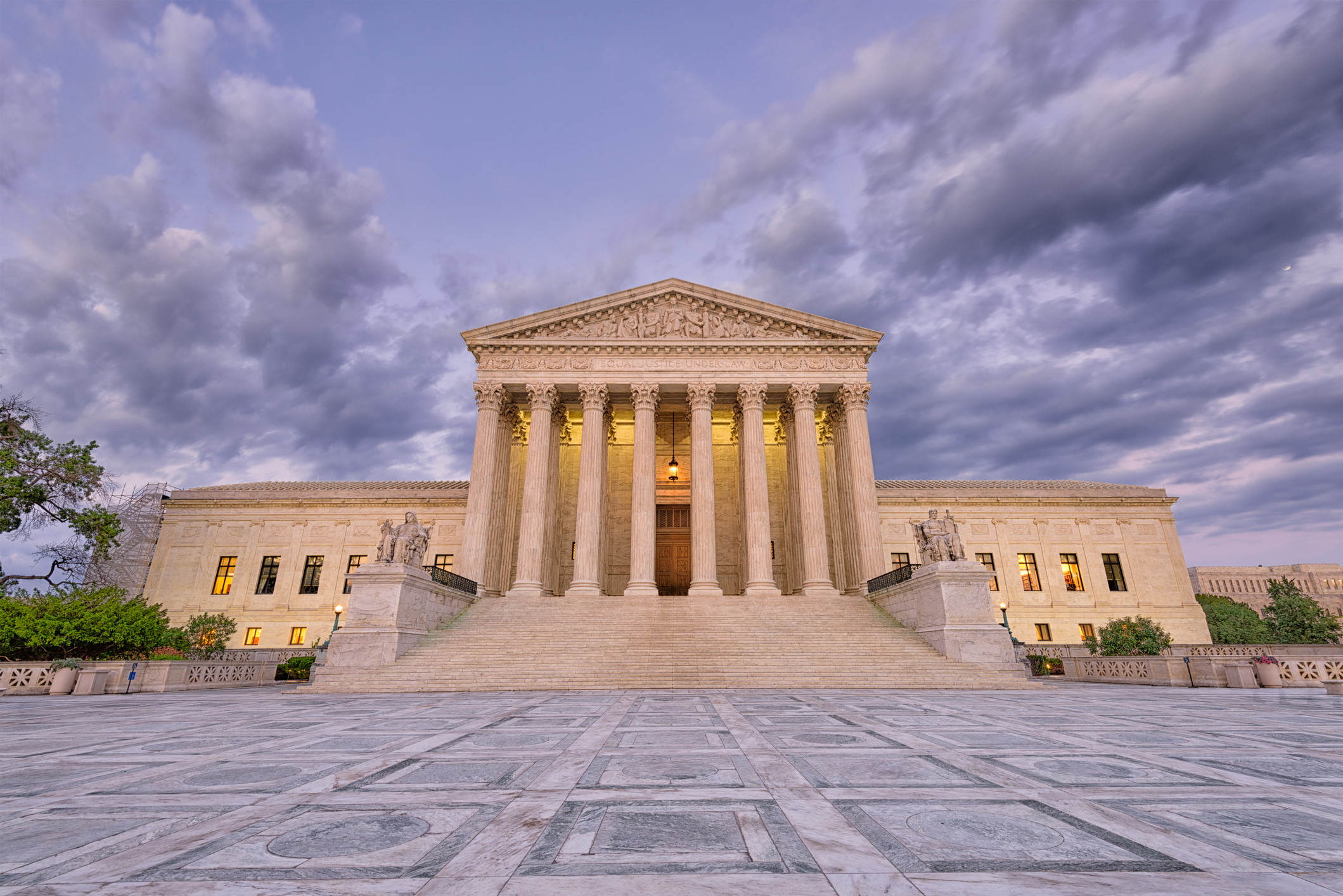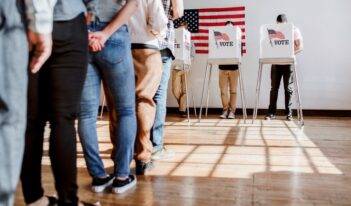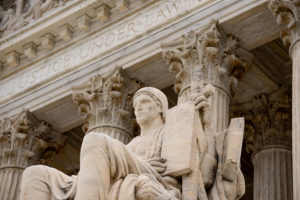
The Supreme Court’s decision in Brnovich v. Democratic National Committee signals a new era of restrictive voting laws.
The American political experiment is ailing.
Marred by antidemocratic institutional features including the Electoral College and the filibuster, excessive levels of partisan rancor, and strong currents of cynicism and distrust among the citizenry, the American political system faces grave and potentially existential, challenges. The insurrection of January 6, 2021, revealed that not even the peaceful transition of power can be taken for granted.
Issues of so-called “election administration” must be understood in this context. Election administration, a somewhat insipid label, encompasses the multitude of choices, some of great significance, that state legislators and election officials make about how to run elections: What hours will the polls be open? Will voters be permitted to vote prior to election day? Who is entitled to vote by mail? What forms of identification must voters possess?
Each of these seemingly prosaic choices, along with countless others, affects the composition of the electorate and, thus, the outcomes of elections by dictating the terms of participation.
Given the United States’ ostensible national commitment to free and fair elections, lawmakers and election administrators have an obligation to design election systems that ensure that all eligible voters can exercise their right to vote with ease.
Yet, for too many voters in too many places, voting remains a challenge. For clarity on how election administration relates to voter participation, consider the concept of “administrative burdens” introduced by Pamela Herd and Donald Moynihan, professors at Georgetown University. They emphasize that burdens such as excessive bureaucracy, challenging paperwork, and complex regulations are deliberate policy choices.
Accordingly, lawmakers have the capacity to make an activity relatively easy or hard. Herd and Moynihan identify three types of costs resulting from administrative burdens that resonate in the election administration context: learning costs, psychological costs, and compliance costs.
Applied to voting, learning costs would include, for example, the burdens of locating a newly relocated polling place or determining what forms of voter identification are necessary. Psychological costs would include the indignity of knowing that governors and state legislators hope to deny or abridge an individual’s vote. And compliance costs would include the time it takes for a voter to complete and submit voter registration forms or ballots.
When the collective costs of these three types of administrative burdens are high, some voters find it exceedingly difficult or impossible to vote. And because lawmakers and election administrators are not operating on a blank slate when imposing burdens—that is, they know for whom and by which means various groups of voters tend to vote—they can target, with some accuracy, certain populations of voters.
The Republican Party has systematized such targeting. Rather than focus its efforts on expanding its base, the Party perceives its future political success as contingent on reducing “democratic performance,” in part by selectively reducing voter participation.
Republican lawmakers have, in all but two states, sought to curtail voting rights. These lawmakers have introduced bills—some of which have already been enacted into law—that impose onerous and needless obstacles on both voters and third-party organizations that facilitate the right to vote. Other bills that have been introduced or passed threaten election administrators with criminal penalties for distributing mail ballot applications.
Reducing voter participation is now the Republican Party’s modus operandi. If these efforts are successful, urban, Black, Latino, and Native American voters—the unstated targets of the hundreds of bills under consideration by state legislatures—will soon find it harder to vote in Republican-controlled states.
Predictably, some commentators dispute this diagnosis. These voter suppression apologists interpret the rash of new election administration legislation as necessary to protect against voter fraud and to preserve public confidence in the integrity of the electoral process. Both goals are laudable in the abstract, yet, as justifications for legislation creating burdens on the right to vote, they are specious.
Voter fraud, as study after study has demonstrated, is extraordinarily rare. It is also already prohibited in every state. As propaganda, however, the notion of voter fraud as an ever-present threat persists, and this persistent belief offers a case study in politically motivated reasoning.
An additional justification often put forward for new election administration legislation—namely, the need to instill public confidence in the integrity of the electoral process—is imprecise and manipulable. Moreover, members of the public who stand to have their votes unjustly denied or abridged are certainly unlikely to feel very confident. Exactly whose confidence is valued in American elections?
Finally, as recent research has established, public confidence in the electoral process is in fact responsive to the voter fraud myth, further undermining the value of relying on inchoate claims about public confidence.
This background helps explain the widespread condemnation that the Supreme Court’s recent decision in Brnovich v. Democratic National Committee has received. With this decision, Justice Alito, writing for the six conservative Justices, further weakened the Voting Rights Act of 1965 (VRA). Section 2 of the VRA provides that:
No voting qualification or prerequisite to voting or standard, practice, or procedure shall be imposed or applied by any State or political subdivision in a manner which results in a denial or abridgement of the right of any citizen of the United States to vote on account of race or color.
Section 2 further notes that a violation of this prohibition:
is established if, based on the totality of the circumstances, it is shown that the political processes leading to nomination or election in the State or political subdivision are not equally open to participation by members of a class of citizens protected by the VRA in that its members have less opportunity than other members of the electorate to participate in the political process and to elect representatives of their choice.
In recent years, Section 2 has served as the primary means of challenging voting rules that disparately impact racial minorities. Section 2’s “key demand,” as put by Justice Kagan in her poignant Brnovich dissent, “is for equal political opportunity across races.”
Prior to Brnovich, lower courts had employed a workable two-part test for Section 2 claims. Section 2 plaintiffs first had to demonstrate that a challenged voting rule had a racially disparate impact, and, second, that this impact could be linked to various social and historical conditions.
The Brnovich majority opinion supplements—or, it might be argued, supplants—that test with a list of five so-called guideposts: the size of the burden imposed by a challenged voting rule, the degree to which a voting rule departs from what was typical in 1982 when Section 2 was amended, the size of the racially disparate impact of a challenged voting rule, alternative opportunities to vote provided by a State, and the strength of the state interests served by a challenged voting rule.
The guideposts provide judicial cover for voter suppression efforts, making it harder to bring successful Section 2 claims.
Following the Brnovich decision, laws with a racially disparate impact deriving from past discrimination may nevertheless survive a Section 2 challenge if, in the mind of a judge, the burden on voters is slight and a state’s voting opportunities are reasonably accessible.
In a particularly troubling portion of the opinion, Justice Alito claims that “one strong and entirely legitimate state interest is the prevention of fraud.” Later, he also contends that “a state may take action to prevent election fraud without waiting for it to occur and be detected within its own borders.”
Every state already prohibits fraudulent voting. Yet the Court’s amplification of the voter fraud canard gives justificatory fodder to Republican officials in their quest to suppress votes.
As expected, some commentators wish to downplay the decision, viewing the new guideposts as “a pretty obvious framework” for resolving these types of election administration disputes. Such claims that there is “nothing to see here” strain credulity to the point of offensiveness.
The Brnovich majority opinion unambiguously conflicts with both the text and intent of the VRA. And commentators suggesting that the opinion does little more than afford states the latitude to benignly experiment with their voting rules reveal willful naivety about the Republican Party’s aims.
Brnovich is an unfortunate decision, and restrictive voting laws are certain to proliferate in its wake. The United States needs a conceptual reorientation of how members of the public, along with courts and legislatures, perceive the right to vote, a reorientation that is focused on constructing and ensuring universal access to the right to vote, rather than always reacting to those seeking to limit it.
The task could hardly be more urgent.
This essay is part of a seven-part series, entitled Regulating Elections in the United States.




